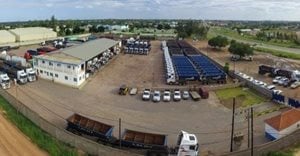Access to integrated information is critical for logistics processes

However, infrastructure problems make this a difficult task, and often cargo transport companies are simply unable to move the cargo as fast as they are receiving it, causing backlogs, inefficiencies and a host of other challenges. Telematics solutions have become increasingly common as a way of mitigating this challenge.
However these solutions often differ from supplier to supplier, and thus are limited by an inability to integrate. In order to optimise and gain maximum control over logistics processes, access to integrated real-time information is critical - which requires a platform to bring disparate telematics together.
The cargo transport sector is one that deals in precision. When containers arrive at the various ports in South Africa, they need to be moved quickly to their destinations. The cargo ships themselves have schedules to meet, and the trucking companies need to deliver goods to customers within a certain time frame, particularly if the goods are perishable.
Limited infrastructure
However, moving cargo from the ports, through cities, across provinces and to different areas relies on limited road and rail infrastructure, which often causes bottlenecks. If there are delays at the harbour, or accidents along the roads, or if the trains are not running on schedule, cargo is delayed.
Truckers may have to wait outside ports, or on roads, potentially causing traffic congestion. In addition, they are being paid for their time but are not productive due to delays.
These are but a few examples of the many challenges these companies face. Having the necessary information in real time about every aspect of the cargo value chain can assist logistics companies to gain greater control and optimise their processes, helping them to deal with these challenges more effectively.
Telematics solutions have become increasingly common in the transport and logistics sector as a way of providing this much-needed information. However, when trucks and trailers from different suppliers with different telematics systems are combined into a single convoy, valuable information may be lost, as manual reconciliation between the different systems is required. Often, different systems from various suppliers cannot work seamlessly together. In addition, individual systems do not provide any benefit to any of the stakeholders outside of the owners of that system.
Critical to efficiency
The key to unlocking the value of telematics lies in breaking down these silos to deliver visibility between the different providers. In order to gain a full understanding of the entire cargo transport chain, integrating multiple systems into a portal that offers full end-to-end visibility is critical to efficiency.
In order to effectively tackle the challenges in the cargo logistics sector, silos need to be broken down using an integrated, cloud-based, vendor-neutral aggregation platform to bring together information from various telematics systems in real-time. A standardised interface, with dynamic central data visualisation that is independent on vehicle manufacturer, telematics provider or stakeholder, will create visibility throughout the value chain. This enables all stakeholders to obtain the information they need to monitor and track cargo throughout the value chain, in real-time.
For example, using such a solution, it can be ensured that trucks are only sent to cargo yards for a pick-up once cargo has been offloaded and is ready to be moved. This will reduce backlog and improve planning and turnaround times. Another example is if adverse weather conditions or road accidents cause delays, all necessary stakeholders can be notified. Information can also be made available to improve journey times and gain an accurate view of arrival times, alleviating congestion and disruption.
Systems for monitoring cold chain goods can be put into place to deliver automatic alerts should temperatures fall outside of acceptable range. Customers can even use these systems to track and trace items in real time, particularly if RFID chips are used as part of the shipping process.
Endless possibilities
There are endless possibilities for the data stored within telematics solutions - it is all about how this data is managed, and the ability to break down silos to deliver real-time information to stakeholders when and where they need it. This in turn helps to close the gap between transport and logistics providers and their customers. Bringing all stakeholders closer together, providing effective services and minimising frustration, will help cargo logistics organisations achieve zero distance with regard to customer service.
However, achieving any of these goals requires that silos be broken down, as operating in isolation will never deliver the required visibility. Integration and real-time information into the flow of goods throughout the transport and logistics sector, and a platform to aggregate the data from the many points in the value chain, are critical in delivering optimisation and control of processes.
About Michael Frans
Michael Frans is a business development manager, Automotive, T-Systems in South Africa.















